How building automation impacts health, efficiency, and indoor air quality in hospitals
How does building automation ensure hospitals are safe, secure, comfortable environments for everyone?




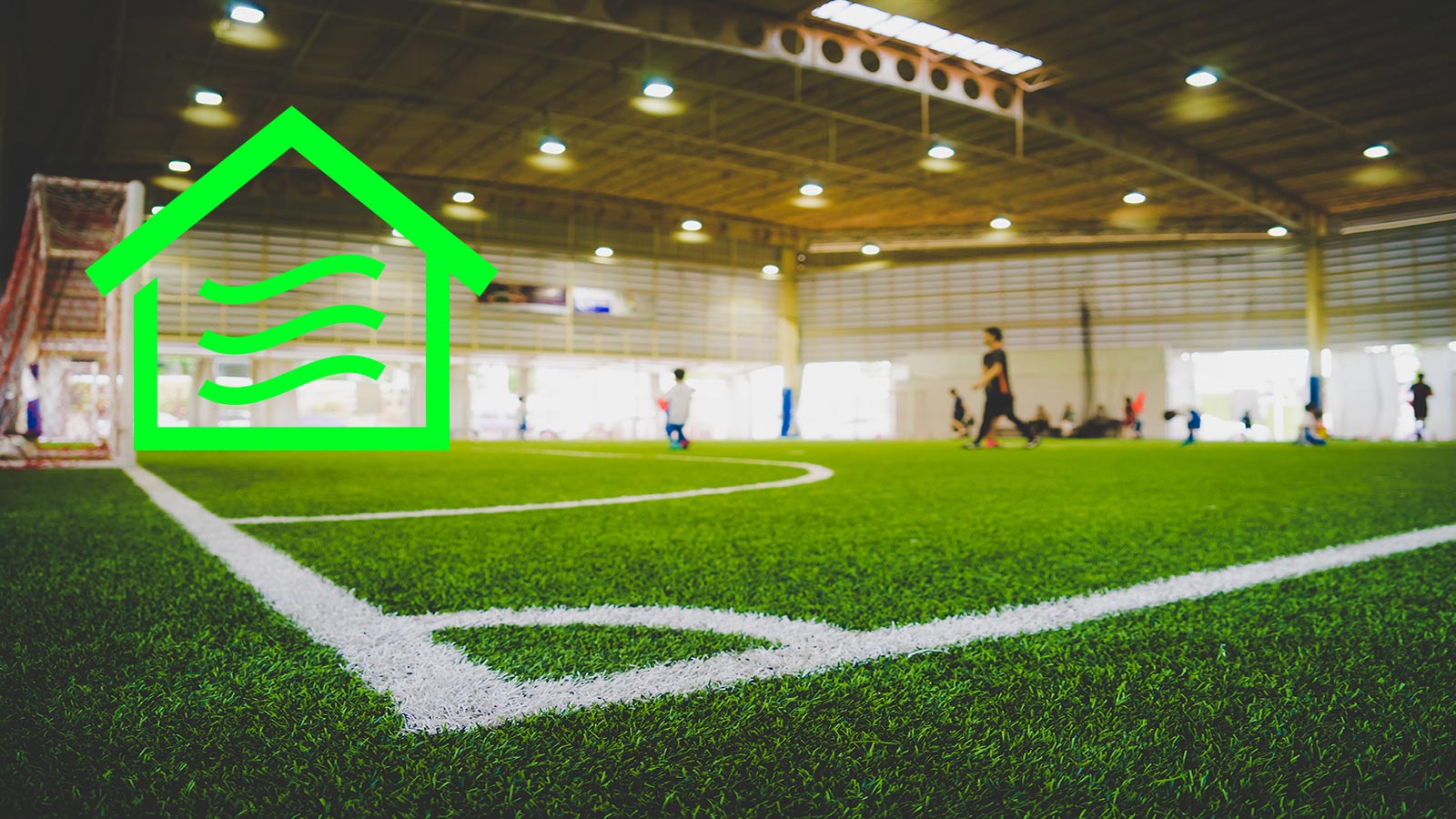
At a glance
If you remember what your high school locker room looked like, one of the first things to come to mind is probably the smell—in other words, bad IAQ. Many things probably contributed to that smell, including the design of the building’s HVAC system.
IAQ in sports and fitness facilities can vary greatly depending on a facility’s age, the level of competition practiced there, and other factors. Retail fitness and youth sports facilities often have bare-minimum HVAC systems, which results in fair to poor IAQ. The IAQ expectations are much higher in professional and conference sports facilities.
ASHRAE Standard 62.1, Ventilation for Acceptable Indoor Air Quality, dictates that locker-room ventilation is exhaust driven, and training spaces are outside-air driven. The minimum exhaust rate for locker rooms is 0.5 cubic feet per minute (CFM) per square foot. The minimum outdoor air rate for training spaces is 20 CFM/person, with area rates ranging between 0.06 and 0.18 CFM/square foot depending on the occupancy category. Makeup air for locker-room exhaust is not required to be 100 percent outdoor air, so transfer air from adjacent spaces can be used as makeup. Retail fitness and youth sports facility designs are often cost driven and use the minimum requirements to stay within budget.
Typical systems designed to meet minimum ventilation requirements include overhead exhaust grills, either duct- or ceiling-mounted, connected to a constant-volume exhaust fan for locker-room ventilation. Locker-room makeup air is often handled by wall- or ceiling-mounted transfer grills with the primary conditioning coming from a recirculating-air-handling unit. Training areas are typically served by a recirculating-air-handling unit that provides code-minimum outdoor air. MERV 8 filters, the industry-accepted minimum, are often used in the air-handling units with both the air handlers and exhaust fans cycling off at night when the building is unoccupied.
Some easily overlooked design considerations that negatively impact IAQ are building pressurization and mixing of air classes. A building air balance calculation should be performed and outdoor air flow adjusted to ensure positive building pressure at all times.
If a building is allowed to operate negatively pressurized—in other words, more exhaust air than outdoor air—air is pulled in through doors and cracks in the building envelope. This air is unfiltered and unconditioned, which could negatively impact IAQ and energy use. Mixing of air classes is regulated by code and should be avoided except under certain conditions detailed in the code.
For example, air from a locker room (Air Class 2) returned to an air handler can’t be mixed with air from office spaces (Air Class 1) before being redistributed to spaces with an Air Class of 1. When you design to meet higher IAQ expectations, pressurization and air class concerns are inherently improved by the system types and strategies you use.
Meeting client IAQ expectations in professional conference and high-end sports and training facilities requires going above and beyond the minimum dictated by code. In an ideal world where cost and operations could be ignored, this means using 100 percent outdoor air at a constant rate, which not only meets the space loads but gives great air turnover while exhausting all air supplied except what’s needed for building pressurization.
The outdoor air could even be cleaned before it is brought into the building using HEPA filters and the latest contaminant-killing technologies. The resulting IAQ could be as good as if not better than the air quality outdoors.
The cost and maintenance required would be enough to take any client’s breath away. To avoid blowing budgets, a balance must be made between the client’s IAQ expectations, energy use, and cost. There is also a point of diminishing return, where only marginal increases in IAQ are achieved, but cost and energy use for those increases remains high (Figure 1).
As most IAQ strategies are implemented, there is an increase in cost, energy, and CO2. At a certain point, strategies may yield marginal IAQ improvements but still have a high cost and increase to energy and CO2 (Figure 2).
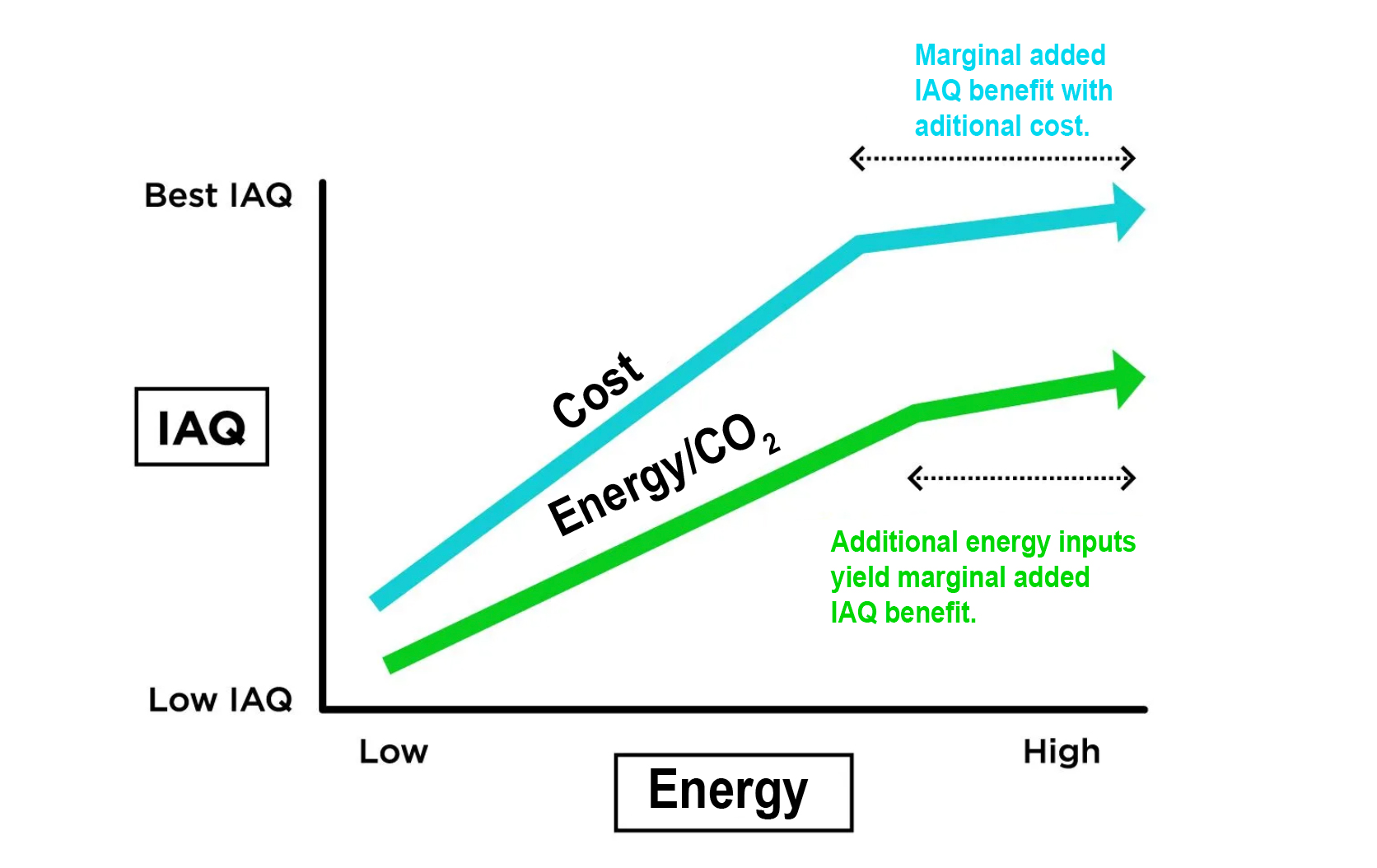
Figure 1: At a certain point, IAQ strategies may yield marginal IAQ improvements but still have a high cost and increase to energy and CO2.
Some strategies that strike a good balance between IAQ, energy use, and cost include increasing ventilation rates, 100 percent outdoor-air handlers with energy recovery, source capture, contaminant separation, building automation systems, increasing filtration, and commissioning.
The following list highlights ways to improve IAQ with a primary focus on sports and fitness facilities. This list isn’t exhaustive.
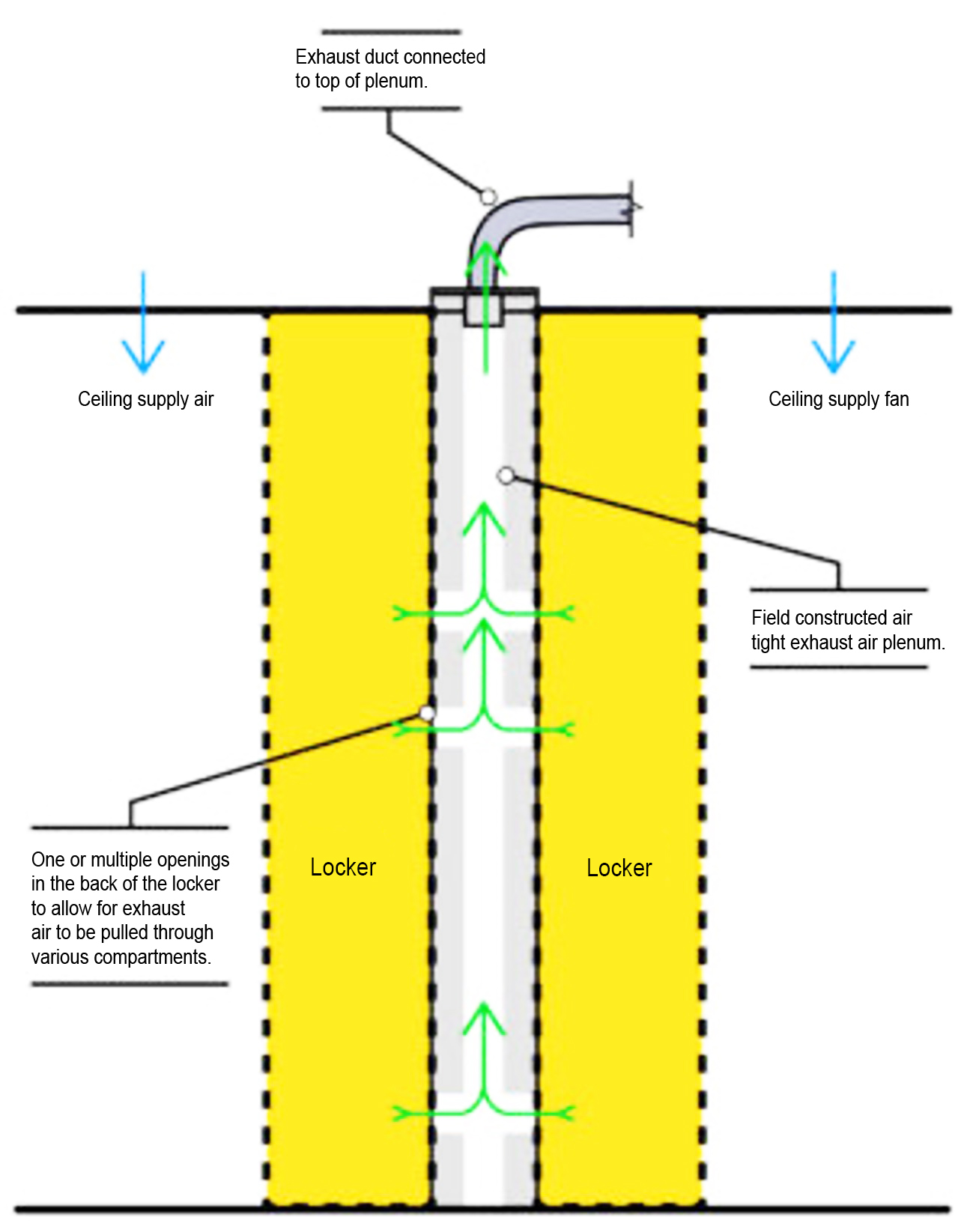
Figure 2: Integrating source capture strategies in locker designs is becoming more popular and is a good way to remove contaminants before they enter an occupied space.
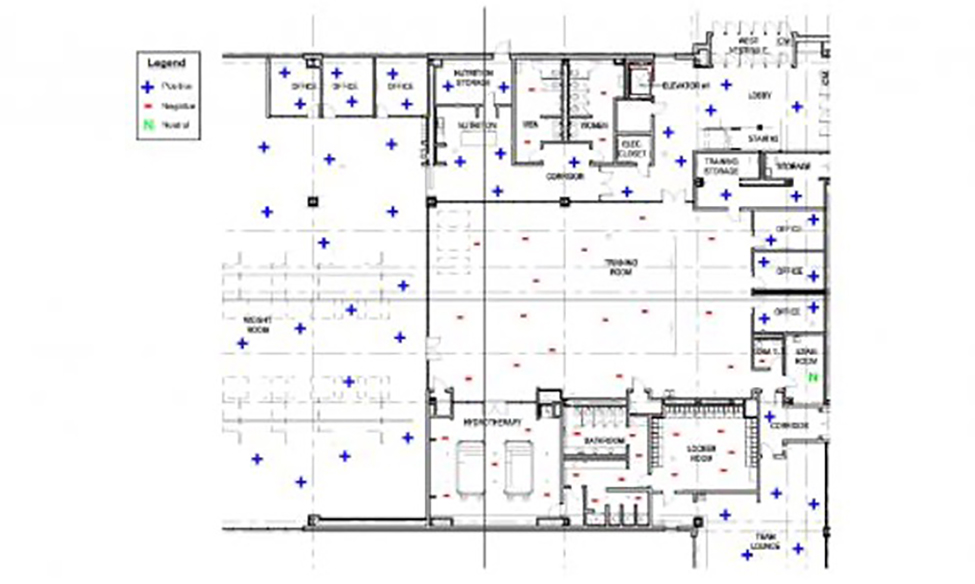
Figure 3: Expected air-pressure relationships between spaces in a sports facility.
These strategies for improving IAQ are frequently used in projects that cater to professional or collegiate athletes, but they can also be scaled to fit most sports and fitness training facilities. For example, 100 percent outdoor-air units can be paired with cost-effective packed-rooftop units or variable refrigerant flow systems. Properly planning for increased filtration at the start of a project can help keep costs down.
Commissioning, sometimes required by code, can be easily tailored to fit any project and even targeted at specific IAQ goals. As these strategies become more widely adopted across all facility types, the relative cost should come down, making way for new technology.
Like any new technology for buildings, the goal should be to improve the occupant and operator experience while reducing energy use. The same goes for new IAQ technology. One technology already on the market but not widely adopted is equipment-disinfecting cabinets, where athletes put their equipment immediately after a workout to both disinfect and dry using ultraviolet lights or ozone.
Source-capture locker exhaust systems have room for improvement. Better locker design and integration with a building ventilation system could improve source capture effectiveness. Building automation system technology is quickly evolving to improve building IAQ.
Tying a building automation system to locally installed ambient-air-quality sensors or open-source outdoor-air-quality data to implement real-time optimization techniques can prevent intake of outdoor air to a building that is worse than the target IAQ. For example, if outdoor-air-quality sensors pick up wildfire smoke, the system could engage a smoke-mitigation mode to minimize smoke intake to a building. In metropolitan areas, a building automation system could be tied to information sources on the internet that track outdoor-air quality and adjust ventilation accordingly.
Digital twins are an emerging technology that will revolutionize how buildings are designed and operated. A digital twin is an exact virtual model of a physical building where the building’s systems, indoor conditions, and outdoor conditions can be manipulated and analyzed for optimal performance through the building’s life cycle, from design to decommissioning. A digital twin could be used to analyze the optimal building system design for the best IAQ. It could be updated for condition changes to help an operator make IAQ-related decisions and used to analyze and make decisions related to just about every aspect of a building.
Some new technologies, like disinfecting cabinets, require no real integration with other building systems and can be easily used in existing facilities. Others require more up-front coordination in a building’s design but can be paired with existing strategies to both improve IAQ and save energy.
Do you design building automation systems? Our website offers free tools and utilities for building design and automation consultants. Make your life easier, save time, and save effort by registering for a Consultant account on our Reliable Controls Support Center.

How does building automation ensure hospitals are safe, secure, comfortable environments for everyone?

Learn when and why MS/TP communication is helpful in building automation systems.

From the moment you park your car at a hockey arena, your comfort and safety are enhanced through a building automation system. Here’s how.
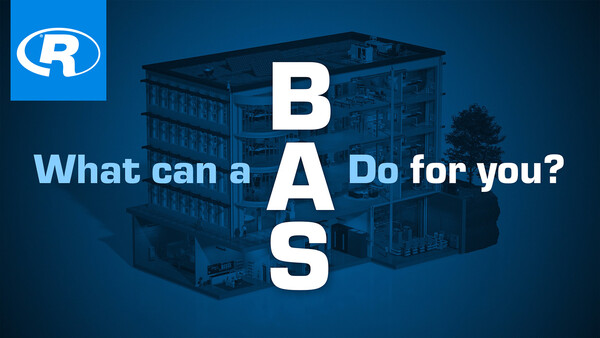
Building automation systems can make buildings truly intelligent, reducing their carbon footprint and saving money. Learn how.

Ever wonder how a building automation system ensures safety and accuracy in lab work?

Museums—and their building automation systems—play an important role in preserving the preserved. Learn how.

When you see a doctor or personal trainer, you benefit from their knowledge and experience. In the same way, a building automation system should provide all the tools you need to maintain your buildings in optimal health.

Combatting climate crisis requires us to view the built environment holistically. Learn why open protocols and interoperability matter.